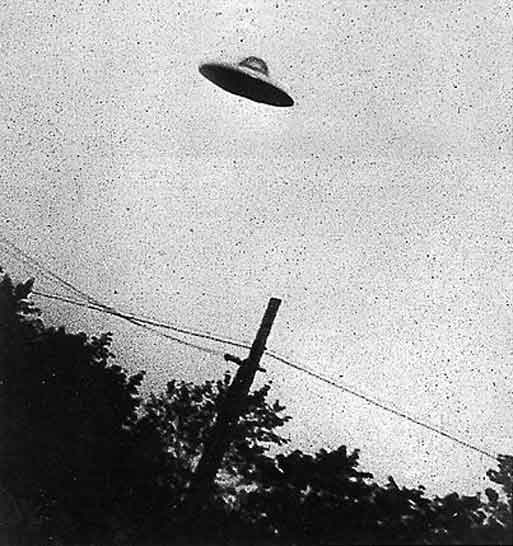You have no items in your cart. Want to get some nice things?
Go shopping
Aliens arrive in the Milky Way, park their spacecraft in a circle around planet Earth. The United Nations attempts to find out what they want, broadcasting radio and satellite signals, but the aliens either ignore them or don’t understand. For several months, the spacecraft orbit Earth, their lights like new stars in the night sky, every attempt at communication unsuccessful. The humans project images into the heavens, choreograph vast light shows, march in parades of over a million people at a time and, taking their cue from a celebrated Hollywood movie, play musical notes through loudspeakers into the atmosphere. But the spacecraft circle the planet in silence, a silence that unnerves the already jumpy population below, and prompts the rise of various figures calling for a pre-emptive military strike.
The UN, stirred into action by the prospect of national vigilantism, has the International Space Agency assemble a crew of astronauts, who fire off in a shuttle to take a closer look at the spacecraft. Images streamed back to Earth show the objects as completely smooth across their surfaces, without windows or wings or wheels, or even weapons—at least that anyone can recognise. In fact, the oval-shaped craft resemble enormous white pebbles, each the size of a national stadium, the kind you might find on a stony seashore and try vainly to skim across the in-rolling waves. Their surfaces appear at once sturdy and delicate, giving an impression more of organic refinement than technological skill: something that leads a minority of commentators to wonder if the craft are actually natural phenomena. The mystery of their star-like radiance – which so preoccupies people watching the night sky, but causes no harm to the astronauts’ eyes – remains one long after the ISA wraps up its mission a month later. Indeed, the crew returns home with mankind essentially none the wiser regarding these unexpected visitors. The film they shoot, however, including footage of a sun-shadowed astronaut touching his glove to one of the craft, instantly takes its place among the great human documents of alien encounter, alongside the Histories of Herodotus, the travel records of Marco Polo and Ibn Battuta, and the sea journals of Captain Cook and Christopher Columbus. Not that many viewers consider the film as such; rather, people speak of it primarily as a prelude, or a portal, to a future of increasingly world-altering revelations.
A year slips by in which, for all humanity’s gatherings, displays and transmissions, the craft continue their impassive—some say phlegmatic—orbit around Earth. The ISA dispatches a manned space station to shadow the trajectory of the giant ships and study them on a permanent basis, but this, too, elicits nothing in the way of a response or acknowledgment. As the months pass, the majority of people on Earth—who after all have jobs to go to, families to raise, dreams to realise—come to accept, if not ignore, the visitors’ presence. In the words of one TV show host of the day: “We can’t wait for these guys to have a beer with us forever!” This comment, in fact, marks the emergence of a new human attitude to the aliens, one of satire and subtle derision, and soon, jokes about these shy or aloof interstellar visitors cross the planet in hundreds of different languages. Yet, the governments of the world fail to come up with any new ideas as to who the aliens are, or where they come from, let alone what they want or have to offer. While a growing number of public figures pound the drum for a military assault, arguing that the aliens are far from home—in presumably unfamiliar territory—and that they’ve committed a surely universal faux pas in turning up at someone’s home unannounced and lurking obtrusively outside, most politicians keep their heads, accepting that any civilisation advanced enough to travel across the universe in such spacecraft would hand humanity its backside on a plate if it came to war.
One sociologist of the day compares mankind’s predicament to that of a tribe of natives on a hitherto undiscovered island. A fleet of modern ships—so her analogy runs—anchors off the coast, its crew considering whether or not to set foot on land. From what they can observe through their telescopic sights, this so-far-uncontacted people live off what nature provides, worship odd totems that litter their territory, settle scores with flint arrows and hand-fashioned spears, squabble amongst themselves at the tiniest provocation, heedlessly despoil their environment, and have only progressed technologically to the point where they can reach the nearest barren rock by raft. The captain of the fleet, in satellite contact with his superiors thousands of miles away on the other side of the planet, receives orders to observe the island and its natives from a distance, avoiding all contact that might trigger conflict or the transmission of germs, until those in charge work out what to do. The likely result of all this, the sociologist concludes, assuming that ethical sensitivity advances in tandem with technology—and she acknowledges some doubt in the assumption—is that the island becomes a kind of conservation area, a living laboratory for all schools of planetary learning.
Another philosopher or theorist, however, specialising in ecology, argues that humans could be more like an endemic species of animal on the island than a technologically backward version of the visitors. “We have no proof that (the aliens) bear any more relation to us than we do to geckos,” he writes in an article read and shared by millions on the internet. “In fact, it may be that humans are common across the universe, flourishing wherever water and light gather in the relevant measures, places perhaps more numerous than we imagine.” In this case, the aliens could simply not care what people get up to, having encountered this species a quadrillion times before, a species trapped like every other in a paradigm of necessity and self-regard, the spectre of its own importance haunting every thought. “Our mysterious visitors,” he sums up, “may well have eyes for some other lifeform or resource on Earth altogether.” Or, as plausibly, they could merely consider Earth’s outer atmosphere a “relatively peaceful cove to drop anchor” before continuing with the rest of their intergalactic journey. Asked what he suggests humanity do in this case, the eco-philosopher responds philosophically, admitting that he needs “time to think that one over.”
A decade flies past. Life on Earth pursues a similar course to that in the era before the aliens arrived. New technologies emerge; world figures rise and fall; problems are solved, only to be replaced by more problems. Life continues its haphazard dance with death; and soon, a generation of people reaches adulthood having never known the night sky without that ring of glowing spacecraft in close and silent attendance. New religions arise worshipping the interstellar visitors as symbols of the infinite, while political movements abound advocating everything from nuclear war to telepathic communication. In every other respect, though, it’s hard to see how the appearance of the aliens has changed the course of human history or consciousness one iota, particularly as national and ideological conflicts, after a brief hiatus, swing back into action, with several invasions, genocides, terrorist atrocities, and “humanitarian” interventions occurring in the first fifteen years of the aliens’ presence around Earth. The vicennial—or twenty-year anniversary—of the visitors’ appearance prompts one poet to conjecture that the spacecraft amount to nothing more than “mirrors sent to reflect our own barbarism, our banality, a ring of eyes through which we’re invited to see ourselves from afar, as the cretins of the universe, incapable of change or meaningful communication, and deserving of our fate under an unpitying, infinite stare.”
Finally, a century, three years and six days later—the significance of this time period attracting innumerable, ultimately pointless speculations–the craft vanish abruptly into the blackness of space. Mankind, who over the decades has grown wearier, if not wiser, turns his eyes to the night sky and wonders where his mysterious guests, who loitered so long on his doorstep without entering, or even saying hello, could have gone. Then, lowering his gaze to life on planet Earth—a place, he has to admit, that remains just as enigmatic and mute as the aliens, no matter that he’s lived here millenia—he reflects that one question, after all, has been settled: that of whether he is alone in the universe.
And the answer this time is clear.

About N/A N/A
Alex Sheal's stories have won awards such as the New Writer Novella Prize (2008) and the David Higham Award (2004). He lives in Hanoi, Vietnam, and is the co-founder of adventure travel company Vietnam in Focus.




